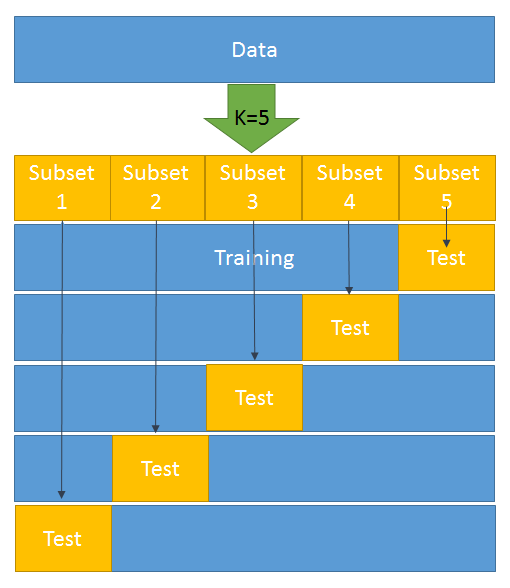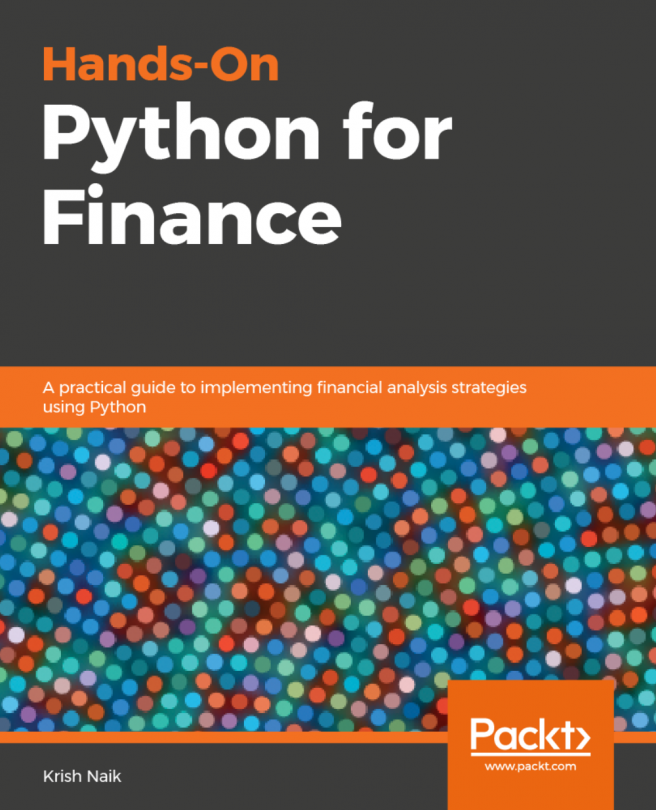Let's walk through the steps of k-fold cross-validation:
- The data is divided into k-subsets.
- One set is kept for testing/development and the model is built on the rest of the data (k-1). That is, the rest of the data forms the training data.
- Step 2 is repeated k-times. That is, once the preceding step has been performed, we move on to the second set and it forms a test set. The rest of the (k-1) data is then available for building the model:

4. An error is calculated and an average is taken over all k-trials.
Every subset gets one chance to be a validation/test set since most of the data is used as a training set. This helps in reducing bias. At the same time, almost all the data is being used as validation set, which reduces variance.
As shown in the preceding diagram, k = 5 has been selected. This means that we have to divide the whole dataset into five subsets. In the first iteration, subset 5 becomes the test data and the rest becomes the training data. Likewise, in the second iteration, subset 4 turns into the test data and the rest becomes the training data. This goes on for five iterations.
Now, let's try to do this in Python by splitting the train and test data using the K neighbors classifier:
from sklearn.datasets import load_breast_cancer # importing the dataset
from sklearn.cross_validation import train_test_split,cross_val_score # it will help in splitting train & test
from sklearn.neighbors import KNeighborsClassifier
from sklearn import metrics
BC =load_breast_cancer()
X = BC.data
y = BC.target
X_train, X_test, y_train, y_test = train_test_split(X, y, random_state=4)
knn = KNeighborsClassifier(n_neighbors=5)
knn.fit(X_train, y_train)
y_pred = knn.predict(X_test)
print(metrics.accuracy_score(y_test, y_pred))
knn = KNeighborsClassifier(n_neighbors=5)
scores = cross_val_score(knn, X, y, cv=10, scoring='accuracy')
print(scores)
print(scores.mean())















































































